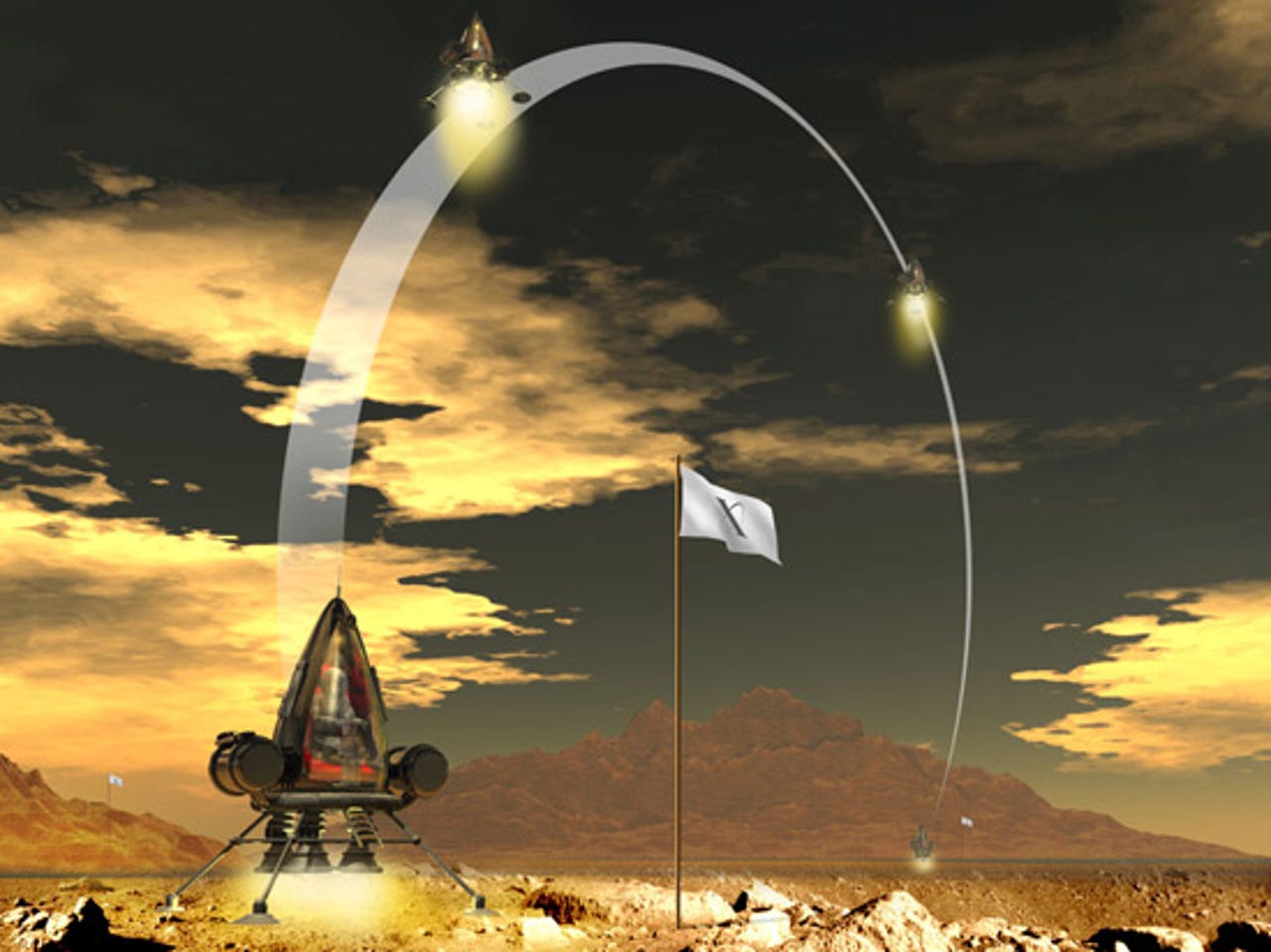Images: Lunar landing contest


X Prize contest
There will actually be two competitions that will simulate takeoff and landing on the moon. In the easier one, vehicles will lift off to 150 feet above the ground and hover for 90 seconds before landing on an smooth surface 100 meters away. In the second competition, the vehicles are required to lift off 150 feet above the ground, hover for 180 seconds and land 100 meters away in an area that is similar to the rocky lunar surface.
Lunar Landing Research Vehicle
For the original Apollo program, NASA researchers first built and tested the Lunar Landing Research Vehicle (left), which was called the "flying bedstead," in 1964.
Eagle
Here is the "Eagle," as photographed by Neil Armstrong as it rested on the moon in 1969. After overshooting its landing area, Eagle hovered over rocky lunar terrain until Armstrong found a safe place to land.
return
This concept drawing of a lunar lander helps NASA illustrate how it plans to return humans to the moon.
SpaceShipOne
On May 5, 1996, to celebrate the anniversary of Alan Sheppard's suborbital flight, the X Prize Foundation announced the Anseri X Prize, $10 million for the first private team to build and fly a spacecraft capable of carrying three people 100km above the earth and then repeating the flight within two weeks. A team headed by aerospace designer Burt Rutan and financier Paul Allen built SpaceShipOne, which won the prize on Oct. 4, 2004. Pilot Mike Melvill celebrates the victory.
The Space Tourist
The X Prize Foundation has already produced many interesting designs. "The Space Tourist" was designed by Discraft Corporation.
vehicle reentry
ILAT has an interesting concept for the final stage of vehicle reentry.